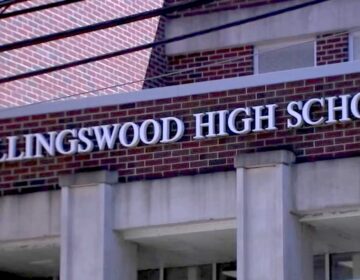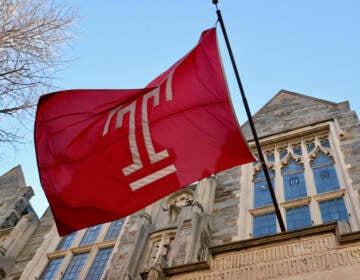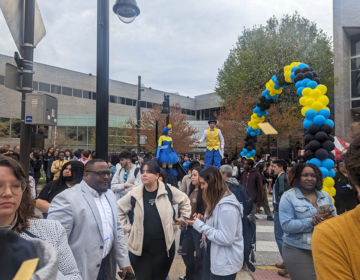Where does all of the Philly School District’s money go?
Philadelphia public school classrooms received less money last year than in 2008, according to a study released this week by consulting group Education Resource Systems.
This study echoes what representatives from the district have been saying in community budget meetings and City Council hearings as they lobby for a funding increase of $300 million in recurring revenue.
“The main theme … is our continued fixed cost increases,” said district Chief Financial Officer Matt Stanksi. That, he said, is “why we keep coming back, year after year, asking for money.”
ERS looked at per-pupil spending in the district between 2011 and 2014, as well as what factors drove the decline. That involved comparing revenue for those years to changes in fixed costs, or costs the district has to pay by law. The report isolated three main fixed costs that have widened the gap created by a decrease in state funding over the past four years: pensions, health care and charter school payments.
Next year, the district’s bills will rise by $90.7 million, with 97 percent of that increase attributed to fixed costs and debt service.
What does that mean? Those four obligations eat up increasingly large portions of the school district’s budget, leaving less and less over time to go to instructional costs such as teacher salaries and supplies.
To show how this happens, the report looked at how each expense increased over time and how the district has had to cut back in other areas to compensate.
Pensions
Facing down a looming pension crisis, Pennsylvania lawmakers have raised the amount employers must pay into PSERS, or teachers pensions, from 5.6 percent in 2011 to 16.9 percent in 2014. That number will top out at nearly 30 percent in 2017.
According to a report released by the City of Philadelphia’s Director of Finance Rob Dubow, the district’s pension bill has grown by $133.5 million in the past five years. But pensions aren’t the district’s fastest growing expense. That would be charter schools.
Charter schools
Next year, the school district will pay $40.8 million more in charter reimbursement payments than this year. That number is tied to enrollment and tuition costs set by the state. As a result, around $800 million of the district’s total budget goes to charter schools, or between a quarter and a third of its budget.
Health care and debt
Benefits represent a smaller but still substantial part of the district’s growing fixed costs. These costs are expected to go up by about $9.8 million next year. Debt service is also creeping up by about 3 percent next year, to take up $277.8 million, or about 10 percent of the district’s total budget.
In total, the district’s mandated costs have increased by $462 million since 2011.
The plus column
For the district to keep asking for more money, it has to acknowledge what it’s already been given. Since 2011, the City of Philadelphia has given the schools $327 million by piecing together revenues from property and other tax increases, as well as new revenue streams such as the tax on cigarettes. Those funds came after stimulus funds for the school district ran out in 2011, and state lawmakers decided not to replace them with state funds.
The difference between fixed cost increases and its revenue — even with the city’s interventions — is why the district returns year after year with its hands out, according to Stanski.
Impossible to cut a way to a solution
The district hopes this report will further make its point that a solution to its funding crisis must come from outside.
“This is not a problem that can be solved by cutting your way to a solution,” said Superintendent William Hite.
A new funding formula and a restructuring of charter school payments are two ways the state could increase its contribution to the district’s revenues and ease some of its cost burden, Stanski said.
In the area of health care, the district has been deadlocked in negotiations with the Philadelphia Federation of Teachers for nearly three years. Attempting to reduce costs, the School Reform Commission canceled the union’s contract in October and mandated employee contributions to health care. The union sued, and that case is now working its way through the state courts. The two sides have not met at the negotiating table since February.
PFT president Jerry Jordan says even though teacher pay has been flat, all of the cuts at the school level also drain teachers’ pockets.
“Teachers are really taking home less money because of the lack of supplies to do their jobs. They’re buying reams of paper … pencils, pens,” said Jordan.
As for pensions, that’s one area where Republican leaders in the Senate and the district seem to agree.
Jennifer Kocher, spokeswoman for Senate Majority Leader Jake Corman, said the ERS report aligns with Corman’s case for pension reform.
“It shows, in very stark numbers, the big cost driver that pensions can be,” said Kocher.
A pension reform bill has already flown through the Senate, but it passed solely on party lines and faces an uphill battle in the House.
Gov. Tom Wolf’s proposed budget would give an additional billion dollars to K-12 education statewide, but he’s already said he does not expect a budget to pass before the June 30 deadline.
In the meantime, schools in Philadelphia are winding down and trying to plan for next year. The district postponed adopting its own budget until June 30 as it waits for City Council and the state to pitch in.
More data from the report:
The district’s share of benefits for teachers went up 32 percent, or around $8,000, since budget year 2011.
The district’s operating budget has fallen 17 percent since 2011 and 5 percent since 2008.
Due to fixed costs, the district’s operating budget has fallen 22 percent since 2011.
Since the budget year 2011, the district laid off 375 full-time administrative employees, about 44 percent of its administrative staff.
WHYY is your source for fact-based, in-depth journalism and information. As a nonprofit organization, we rely on financial support from readers like you. Please give today.




